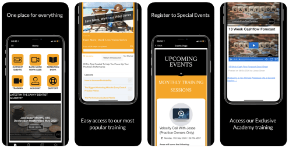Introducing a new surgical process can be exciting and nerve-wrecking. It takes a lot deliberation, education and above all hefty investments to put a new surgical process on the table. However, many a time, in the flurry getting it out to your patients, you forget the most important component- on how to make it a success.
Introducing is more difficult than it seems at face value. You need a certain skillset to get people to accept it, opt for it, and pay for it in order to make it successful. This week, we discuss the three important skillsets that need to be mastered in order to make a surgical procedure a success. Let’s break these skillsets down into components:
- To be able to attract patients
- To be able to develop the case presentation skills required
- To make the workflow efficient
Now, let’s discuss these three in a little more detail.
How to Attract Patients
You probably already have an extensive patient database. These include your existing patients, luring in new patients and reactivating patients who may have slipped through the cracks. At the base of this skillset is marketing. Not a lot of practice owners give marketing its due diligence, or aren’t doing it correctly.
You cannot just be spreading out pamphlets around your neighbourhood in the hopes that someone will need the new procedure that you are offering. And then also holding your breath or crossing your fingers in hopes that they would select you for the said procedure. All this hardly worked in the ancient times that it was popular, let alone in current competitive markets.
Following is a breakdown if important marketing tactics to help you get the right word out to the right people:
Three M’s of Marketing
The three M’s of marketing are the market itself, the message and the medium for delivering that message.
Your Ideal Patient Avatar- Your Market
This is inarguably the most crucial component of your marketing strategy. If you get this wrong, everything else will fail to have an impact. You need to understand who your ideal patient is? What their hopes and frustrations and aspirations regarding dental services are? Now build your patient avatar around this.
I speak a lot about the patient avatar because it really helps you design your marketing strategy around it and thus increase your chances of success. Say your ideal patient is a 50 year old retiree looking for restoration work. Do you think you’d have more success on Instagram or Facebook with it? Should you opt for a newsletter or newspaper? Perhaps both! Should you use words like ‘longevity’ or ‘popularity’ to have more impac?
Having a patient avatar helps you design your marketing strategy down to the T, giving you better chances of success.
What Makes them Sing?- Your Message
Once you understand your market and your needs, you can design your message accordingly in order to hit right where it hurts, or doesn’t hurt! You need to make your service unique and valuable. The problem for most dentists is that the services they offer are really valuable, but they are not unique. And for this reason they become commoditized. This is where you really need to brainstorm and come up with ideas to do it differently.
How Do You Attract Your Ideal Patient?- Your Medium
As discussed earlier, you need to communicate with your targeted patients through means that they best resonate with. Social media and online marketing have quickly become undeniably impactful. However, the internet is a sea of information and you need to fish at the right places to attract the right fish. Say you are going fishing, then you need to have a good understanding of what type of fish you want to catch. You also need to know the right kind of bait to attract that specific fish and you need to know where that fish hangs out to increase your chances of success.
Make sure you have a stellar, fully functional, user-friendly and highly informative website. Also include newsletters, be active on social media and interact with prospective patients to increase your visibility and chances of success. Basically keep evolving with the marketing trends and demands online.
Case Selection
Wrong case selection kills efficiency by a large margin. Every case selection should go through rigorous criteria to determine what type of a case it is. There are typically four types of cases. Imagine a little grid; on the vertical axis at the top are the easy patients, on the bottom vertical axis are the difficult patients. On the horizontal access on the right hand side are the easy cases and on the left hand side are the difficult cases.
You should begin your procedural journey with the top right box that consists of the easy case and easy patient. Once you gain more confidence, move on to the bottom right and top left cases which are the difficult ones. They are the easy patient with difficult case or the easy case with difficult patient. Both these offer a lot of opportunity to master your skills. On the bottom left side is the danger zone, this is the difficult case with a difficult patient. I can only warn you against these and strongly recommend that you stay away from them. These could do more harm and no good to your dental practice’s reputation in the long run.
Case Presentation
This is another extremely important and often overlooked component of introducing new surgical procedures. How you present your case can make or break a deal. A lot like how and when you propose someone for marriage. You need to gradually make them realise that you are the best candidate for the position.
You can’t just offer a solution to their problem off the bat and expect them to jump right on the surgical chair. Invest some time to understand your prospective or existing patients, build trust and then offer the solution. Give them space and time to deliberate and make informed decisions.
Build out The Workflow
The success of your newest procedural additions depends as much on your team as it does on you. What this means is, you need to ask yourself if you and your team members are prepared for all the steps of the procedure. What short of procedural checklists do you need in place for each of those steps? What instruments might be required? Is there training required for any of the staff Are there conversational frameworks that need to be in place? How do you know it is successfully completed? You need to build your workflow extremely well in order to make the procedure successful.
P.S. Whenever you’re ready …. here are 4 ways I can help you grow your dental practice:
1. Grab a free chapter from my book “Retention – How to Plug the #1 Profit Leak in Your Dental Practice”
The book is the definitive guide to patient retention and how to use internal marketing to grow your practice – Click Here
2. Join the Savvy Dentist community and connect with dentists who are scaling their practice too
It’s our Facebook group where clever dentists learn to become commercially smart so that they have more patients, more profit and less stress. – Click Here
3. Attend a Practice Max Intensive live event
Our 2 day immersive events provide access to the latest entrepreneurial thinking and actionable strategies to drive your practice forward. You’ll leave with a game plan to take your results to the next level. If you’d like to join us, just send me a message with the word “Event and I’ll get you all the details! – Click here
4. Work with me and my team privately
If you’d like to work directly with me and my team to take your profit from 6 figures to 7 figures …. just send me a message with the word “Private”… tell me a little about your practice and what you would like to work on together, and I’ll get you all the details! – Click here






